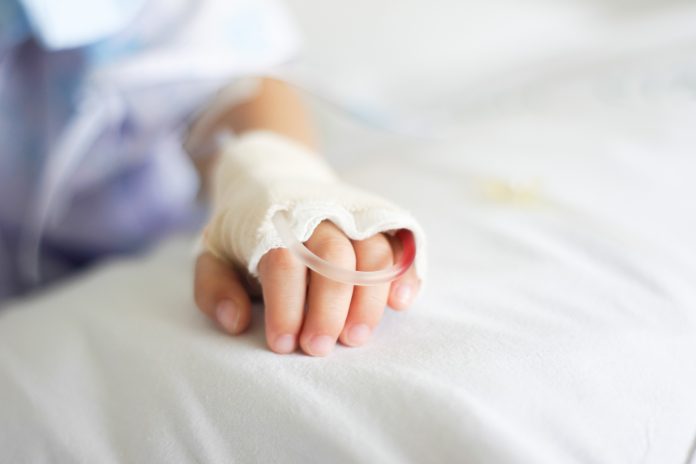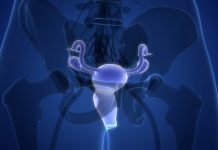A scarcity of suitable therapies and geographic disparities in access to care are impacting survival rates for children with cancer; Lorna Rothery spoke to the European branch of Childhood Cancer International, a pan-European organisation committed to improving outcomes for children and adolescents affected by cancer
CCI Europe is the biggest pan-European childhood cancer parents’ and survivors’ organisation representing childhood cancer parents’ and survivors’ groups and other childhood cancer organisations.
CCI Europe advocates for the rights and needs of childhood cancer patients and survivors at the European level by engaging with the European institutions and stakeholders active in the health sector. CCI Europe also actively engages and partners in research and development though its Research and Innovation pillar.
CCI Europe is engaged in many EU-funded projects such as UNCAN.eu, PanCareFollowUp (PCFU) and ALADDIN. CCI Europe also coordinates the EU-funded project ‘EU-CAYAS-NET’ aimed at developing a ‘European Youth Cancer Survivors Network’ with Youth Cancer Europe.
What are some of the key obstacles that have impeded progress in childhood cancer research?
Paediatric cancer is a rare disease with 35,000 children and young people diagnosed each year in Europe. It is the first cause of death by disease for children aged over one year with 6,000 deaths each year in Europe.
The complexities associated with paediatric cancer (e.g., rare disease with more than 60 different paediatric malignancies, difficulty to recruit patients in clinical trials etc.) as well as the small patient population have led to the oversight of the development of paediatric anticancer drugs. Investments in the development of drugs for a small and high-risk population is intrinsically and economically unattractive for pharmaceutical companies.
Since the Paediatric Regulation came into force in 2017, only 16 new medicines have been approved for the treatment of children with cancer – compared to over 200 for adult cancers over the same period.
In order to accelerate drug development, we need to speed up the opening process and execution of early-phase clinical trials. Today, clinical trials are mostly open in Northern and Western European countries, while opening these trials in all European countries would allow the swifter recruitment of patients and, as a result, the completion of clinical trials.
As stated by Lejla Kamerić, mother of a childhood cancer survivor and member of CCI Europe Regional Committee, in Eastern European countries such as Bosnia, where her child was treated, paediatric cancer research is practically non-existent or at least less advanced than in Western Europe. The biggest challenge in these Eastern European countries is to provide basic care for children affected by cancer.
What challenges are associated with the screening and diagnosis of childhood cancers? How do cancer inequalities impact access to care?
Only a small portion of children who have been diagnosed with cancer (5-8%) have a known genetic predisposition to develop cancers. To those children, we need to offer regular check-ups to allow an early-stage detection of any new upcoming cancer.
This is why CCI Europe calls for access to genetic testing and implementation of genetic counselling for all children and adolescents in Europe. DNA sequencing for all newly diagnosed children and molecular profiling of tumors across Europe would provide opportunities for an enhanced understanding of childhood cancers.
On another note, as paediatric cancers are very rare diseases, general practitioners do not develop sufficient expertise to timely diagnose the different types of paediatric cancer. We need to build awareness and education amongst general practitioners to improve the chances of detecting cancer earlier and their prognosis.
If we focus on cancer inequalities in access to care, the disparity between adults and paediatric oncology is reflected in the young patients’ access to innovative clinical trials: in paediatrics, this access remains an exception and only one in ten children running out of therapeutic options is admitted in an early-phase clinical trial. Quite logically, as a result, the average survival rate has been stagnating and only gained a meagre 4% since 2000.
Inequalities also exist between children with cancer in the different countries of Europe. Indeed, children with cancer across Europe experience inequalities in access to the best available standard diagnostics, treatment, care and research protocols. These disparities contribute to differences in survival of 20% or more and are of greater concern in particular eastern European countries than those in northern and western Europe.
What are some of the late effects of childhood cancer treatment?
Since research and the development of specific drugs for paediatric cancer is very limited, most children with cancer are treated with very old drugs, dating back to the 50s, 60s or 70s. These drugs are highly toxic, as most of them are not suitable for children.
Due to the use of old and toxic drugs, childhood cancer survivors suffer from severe long-term sequelae. Survivors represent about half a million people in Europe today and two-thirds of them suffer from long-term effects such as loss of visual acuity, heart problems, venous disease, amputation, organ removal, memory issues, or exposure to a higher risk of secondary cancers (caused by the treatment of the first cancer).
It is, therefore, crucial to invest more in research to develop better treatments for children with cancer.
How important is international collaboration and knowledge sharing in healthcare, particularly in terms of supporting cancer research?
As we are dealing with very rare diseases, international cooperation is crucial to foster research and find innovative treatments. For countries that are smaller in size this cooperation is even more important as the number of patients affected by childhood cancer is lower. This is why CCI Europe supports the creation of a network of Paediatric Cancer Infrastructures, as foreseen in the Europe’s Beating Cancer Plan. This will certainly improve equal access to high-quality care and research in paediatric oncology, provided that the participation of all paediatric units is supported – whether they are situated in a paediatric hospital or an adult oncology hospital.
Other cross-border collaborations within the EU are already in place. The European Reference Network on Paediatric Cancer (ERN PaedCan) aims at creating a forum of expertise among both healthcare providers and patients whose conditions require specialised expertise and tools not widely available as a result of the paucity of cases and a lack of resources.
Finally, collaboration with other regions is of paramount importance: the ACCELERATE Platform is a multistakeholder group reuniting specialists from Europe, Canada, the US, and more to facilitate drug prioritisation, better meet patients’ needs, and increase the feasibility of paediatric developments.
Childhood Cancer International – Europe
https://ccieurope.eu/
Twitter
LinkedIn
Facebook
Instagram











